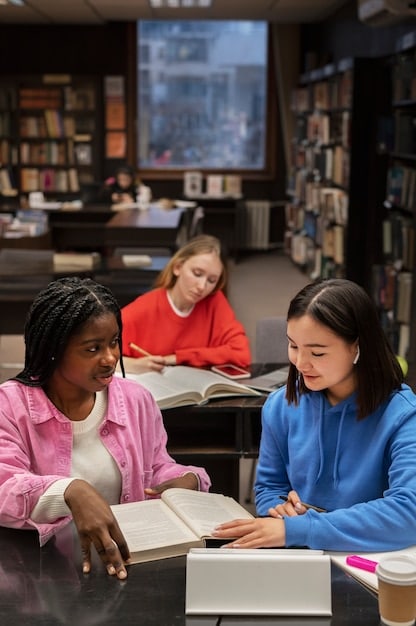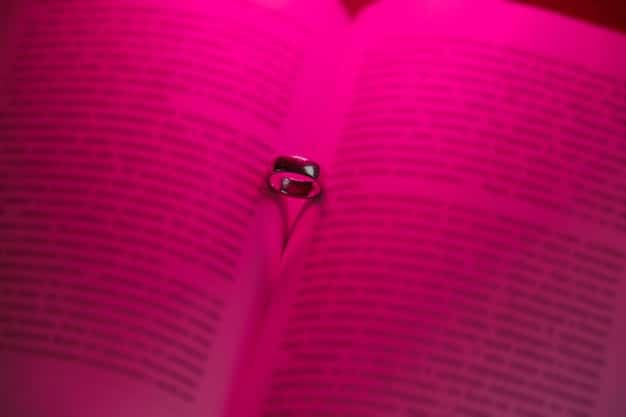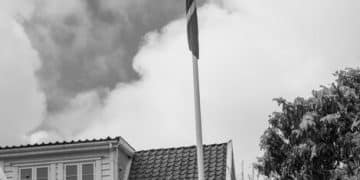Feminist Literary Criticism in the US: 1970-2025 Analysis

The Evolution of Feminist Literary Criticism in the US: A Comparative Analysis of Works from 1970 to 2025 reveals how feminist perspectives have reshaped literary interpretations, addressing gender, power, and social justice within American literature over five decades.
Dive into The Evolution of Feminist Literary Criticism in the US: A Comparative Analysis of Works from 1970 to 2025. Explore how feminist thought has transformed our understanding of literature.
Understanding Feminist Literary Criticism
Feminist literary criticism is a form of literary criticism that is based on feminist theories and perspectives. In essence, it looks at literature through the lens of gender. It seeks to understand how women are represented in literature and how these representations reflect and reinforce societal norms and power structures.
This critical approach also explores how gender influences the creation and reception of literary works. Feminist critics often examine the works of both male and female authors, analyzing the portrayal of female characters, the underlying gender biases, and the socio-political contexts that shape the narratives.
By questioning patriarchal assumptions and challenging traditional interpretations, feminist literary criticism aims to promote a more inclusive and equitable understanding of literature. This includes looking at intersectionality, where gender intersects with race, class, and other forms of identity.

Historical Context
- First-Wave Feminism: Focused on women’s suffrage and property rights.
- Second-Wave Feminism: Addressed broader issues like reproductive rights and workplace equality.
- Third-Wave Feminism: Emphasized individualism and intersectionality, challenging universal definitions of womanhood.
The roots of feminist literary criticism can be traced back to the late 1960s and early 1970s, coinciding with the second-wave feminist movement. Early feminist critics sought to rectify the glaring omission of women from the literary canon and challenge the stereotypical portrayals of female characters in literature. These early efforts laid the foundation for a more nuanced and inclusive approach to literary analysis.
As feminist thought evolved, so too did feminist literary criticism. The rise of third-wave feminism in the 1990s brought with it a greater emphasis on intersectionality, recognizing that gender is always mediated by other factors such as race, class, and sexuality. This led to more complex and nuanced readings of literary texts, taking into account the diverse experiences of women from different backgrounds.
Today, feminist literary criticism continues to evolve, engaging with contemporary issues such as transgender rights, environmentalism, and globalization. It remains a vibrant and dynamic field of study, challenging readers to rethink their assumptions about literature and the world around them.
In summary, understanding feminist literary criticism means recognizing its interdisciplinary nature, its commitment to social justice, and its ongoing relevance in contemporary society.
Key Works and Authors of the 1970s
The 1970s marked a pivotal period for feminist literary criticism in the United States. This era saw the publication of several seminal works that laid the theoretical and methodological foundations for the field. Authors like Elaine Showalter, Sandra Gilbert, and Susan Gubar were instrumental in shaping the discourse and establishing feminist literary criticism as a legitimate academic discipline.
One of the most influential works from this period is Elaine Showalter’s “A Literature of Their Own” (1977). Showalter’s work focused on discovering and promoting literature written by women. Providing a valuable historical record, it brought awareness to numerous forgotten authors and helped in the establishment of the female literary traditions.
Influential Authors
- Elaine Showalter: Known for her work on gynocriticism and the female literary tradition.
- Sandra Gilbert and Susan Gubar: Collaborated on “The Madwoman in the Attic,” a groundbreaking study of women writers.
- Judith Fetterley: Author of “The Resisting Reader,” which examines how women readers challenge patriarchal texts.
Showalter’s concept of gynocriticism, which focuses on the study of women as writers, provided a framework for analyzing the unique experiences and perspectives of female authors. Sandra Gilbert and Susan Gubar’s “The Madwoman in the Attic” (1979) offered a powerful re-reading of canonical works of English literature, highlighting the ways in which women writers have been marginalized and silenced by patriarchal literary traditions. Their analysis highlighted the recurring tropes and strategies used by women writers to subvert the dominant ideologies embedded in their works.
Judith Fetterley’s “The Resisting Reader” (1978) explored the ways in which women readers negotiate their relationship with patriarchal texts. Fetterley argued that women are often forced to identify with male protagonists and adopt a “masculine” perspective in order to engage with literature. However, she also suggested that women can resist this process by actively challenging the assumptions and values embedded in the text.
These works and authors collectively contributed to a vibrant and transformative period in feminist literary criticism. They challenged conventional wisdom, expanded the scope of literary analysis, and paved the way for future generations of feminist scholars. Their contributions continue to resonate today, shaping our understanding of literature and its relationship to gender and power.
In conclusion, the key works and authors of the 1970s laid the foundation for feminist literary criticism, challenging traditional literary norms and championing women’s voices in literature.
The Rise of Intersectionality in the 1980s and 1990s
The 1980s and 1990s witnessed a significant shift in feminist literary criticism with the rise of intersectionality. This concept, first articulated by Kimberlé Crenshaw, recognizes that gender is not an isolated category of analysis but is always intertwined with other forms of identity such as race, class, sexuality, and disability.
The incorporation of intersectionality into feminist literary criticism led to a more nuanced and inclusive approach to literary analysis. Critics began to examine how the experiences of women are shaped by their multiple and intersecting identities, challenging the notion of a universal female experience.
Key Concepts and Figures
- Kimberlé Crenshaw: Coined the term “intersectionality” to describe the overlapping systems of oppression faced by marginalized groups.
- bell hooks: Explored the intersection of race, class, and gender in her critical work.
- Gayatri Chakravorty Spivak: Examined the representation of subaltern women in postcolonial literature.
bell hooks, for instance, explored the intersection of race, class, and gender in her critical work, highlighting the unique challenges faced by Black women in American society. Gayatri Chakravorty Spivak’s work examined the representation of subaltern women in postcolonial literature, raising questions about the power dynamics involved in the representation of marginalized groups.
The rise of postcolonial theory also influenced feminist literary criticism during this period. Postcolonial critics challenged the Eurocentric biases in literary studies and examined how literature reflects and reinforces the power dynamics between colonizers and the colonized.
By incorporating intersectionality and postcolonial perspectives, feminist literary criticism became more attuned to the complexities of identity and power. This broadened the scope of literary analysis and paved the way for more inclusive and socially conscious interpretations of literature. It allowed for deeper engagement with the works of authors from diverse backgrounds and experiences.
Overall, the rise of intersectionality in the 1980s and 1990s enriched feminist literary criticism, leading to a deeper understanding of the complex interplay between gender, race, class, and other forms of identity.

Contemporary Trends: 2000-2025
As we move into the 21st century, feminist literary criticism continues to evolve, engaging with contemporary issues and embracing new theoretical approaches. The field has become increasingly interdisciplinary, drawing on insights from fields such as queer theory, critical race theory, and disability studies.
One of the key trends in contemporary feminist literary criticism is the focus on transnationalism and globalization. Critics are examining how literature reflects and shapes the global flows of people, ideas, and capital, and how these flows impact women’s lives in different parts of the world.
- Transnational Feminism: Focuses on the global flows of people, ideas, and capital and their impact on women’s lives.
- Queer Theory: Challenges traditional notions of gender and sexuality.
- Eco-feminism: Examines the relationship between women and the environment.
Queer theory has also had a significant impact on feminist literary criticism, challenging traditional notions of gender and sexuality. Queer feminist critics are exploring how literature can challenge heteronormative assumptions and create space for more fluid and diverse understandings of gender and sexuality.
Another emerging trend is the rise of eco-feminism, which examines the relationship between women and the environment. Eco-feminist critics argue that the domination of women and the domination of nature are interconnected and that both are rooted in patriarchal ideologies. They explore how literature can promote ecological awareness and inspire environmental activism.
Finally, contemporary feminist literary criticism is becoming increasingly attuned to the digital age. Critics are examining how digital technologies are transforming the production, distribution, and reception of literature, and how these changes are impacting women writers and readers.
In conclusion, contemporary feminist literary criticism is a dynamic and multifaceted field that continues to evolve in response to changing social and political contexts. By embracing interdisciplinary approaches and engaging with contemporary issues, feminist critics are pushing the boundaries of literary analysis and contributing to a more just and equitable world.
Analyzing Recurring Themes and Motifs
Throughout the evolution of feminist literary criticism, certain themes and motifs have emerged as central concerns. These recurring elements reflect the ongoing efforts to understand and challenge patriarchal structures and to amplify women’s voices in literature.
One of the most prominent themes is the representation of female characters. Feminist critics have consistently scrutinized the ways in which women are portrayed in literature, challenging stereotypical depictions and advocating for more complex and nuanced representations.
Common Literary Elements
- The Madwoman: Represents female characters who defy societal norms and resist patriarchal control.
- The Angel in the House: Embodies the Victorian ideal of female domesticity and self-sacrifice.
- The Male Gaze: Refers to the way in which women are often depicted as objects of male desire.
Another recurring theme is the exploration of female identity and subjectivity. Feminist critics have examined how women navigate their identities within patriarchal societies and how they assert their agency and autonomy in the face of oppression. This often involves challenging the traditional binary oppositions that define gender roles and embracing more fluid and intersectional understandings of identity.
The motif of resistance is also central to feminist literary criticism. Many feminist critics explore how women characters resist patriarchal control through acts of defiance, subversion, or rebellion. This resistance can take many forms, from subtle acts of non-compliance to overt acts of protest.
Finally, the theme of sisterhood is often explored in feminist literary criticism. Feminist critics examine how women find strength and solidarity in their relationships with other women and how these relationships can challenge patriarchal structures.
In sum, analyzing recurring themes and motifs in feminist literary criticism provides valuable insights into the ongoing struggle for gender equality and the power of literature to challenge and transform societal norms.
Future Directions and Challenges
Looking ahead, feminist literary criticism faces both exciting opportunities and significant challenges. The field is poised to continue evolving in response to new social and political developments, embracing interdisciplinary approaches and engaging with emerging technologies.
One of the key challenges facing feminist literary criticism is the need to address the ongoing underrepresentation of marginalized voices in literary studies. While progress has been made in recent decades to diversify the canon and promote the work of authors from diverse backgrounds, there is still much work to be done.
Another challenge is the need to engage with the digital age. Feminist critics must grapple with the ways in which digital technologies are transforming the production, distribution, and reception of literature, and how these changes are impacting women writers and readers.
Despite these challenges, feminist literary criticism has much to offer in the years to come. By embracing interdisciplinary approaches, engaging with contemporary issues, and amplifying marginalized voices, feminist critics can continue to push the boundaries of literary analysis and contribute to a more just and equitable world.
- Embracing Interdisciplinarity: Drawing on insights from other fields such as sociology, psychology, and history.
- Engaging with Digital Technologies: Examining the impact of digital technologies on literature and culture.
- Amplifying Marginalized Voices: Promoting the work of authors from diverse backgrounds and experiences.
Moreover, the increasing awareness of intersectionality will likely lead to even more nuanced and inclusive analyses of literature. This includes exploring how gender interacts with other identities like disability, socioeconomic status, and geographic location, enriching the critical discourse.
In conclusion, while challenges remain, the future of feminist literary criticism looks bright as it adapts, evolves, and continues to provide essential insights into literature and society.
| Key Aspects | Brief Description |
|---|---|
| 🚺 Early Focus | Primarily focused on rediscovering and promoting women’s literature. |
| 🤝 Intersectionality | Emerged to include race, class, and other identities, providing nuanced analyses. |
| 🌍 Global Perspectives | Considers global influences and transnational feminist issues. |
| 🌱 Eco-Feminism | Explores the connection between the domination of women and nature. |
Frequently Asked Questions
▼
Feminist literary criticism examines literature through a feminist lens, focusing on gender dynamics, representation of women, and societal power structures. It challenges patriarchal assumptions in texts.
▼
Significant figures include Elaine Showalter, known for gynocriticism; Sandra Gilbert and Susan Gubar, authors of “The Madwoman in the Attic”; and bell hooks, who addresses race, class, and gender.
▼
Intersectionality recognizes that gender intersects with race, class, sexuality, and other identities. It is essential for a comprehensive understanding of women’s experiences and how they are depicted in literature.
▼
It evolved from focusing on rediscovering women’s literature to incorporating intersectionality, postcolonial perspectives, and contemporary issues like queer theory and eco-feminism to reflect inclusivity.
▼
Common themes include female representation, the exploration of female identity, resistance against patriarchal control, and the importance of sisterhood and solidarity among women in literature.
Conclusion
In conclusion, the journey of feminist literary criticism in the US from 1970 to 2025 showcases a remarkable evolution, marked by significant milestones and paradigm shifts – the initial focus on female authorship and the later embrace of intersectionality have broadened its scope. As the field advances, it will continue to play a pivotal role in fostering a more equitable and inclusive literary landscape.





